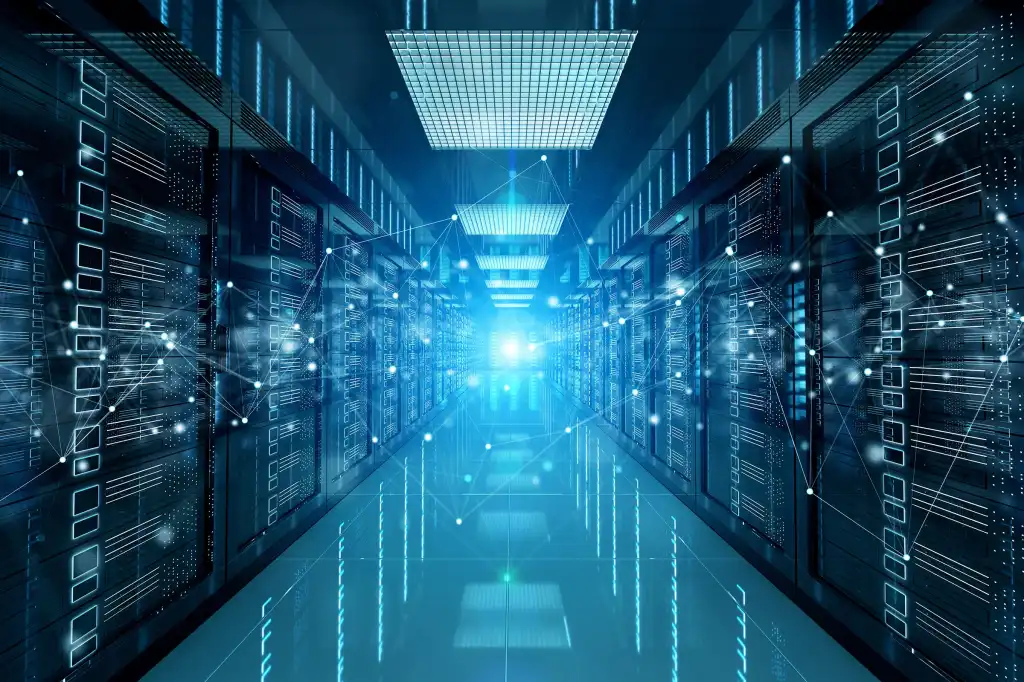A Data center is a lot of work, especially if you’re running a company that relies heavily on online operations and the safety of data. But what keeps these critical hubs running smoothly? Enter data center management—the practice of optimizing resources, maintaining infrastructure, and ensuring seamless performance. With effective management, businesses can reduce costs, improve reliability, and scale operations effortlessly. This article explores what data center management entails, its key components, and the tangible benefits it brings to your organization. Whether you’re a startup or an enterprise, understanding this concept is essential for staying competitive in the digital age. Let’s dive in!
Definition of data center management
Data center management refers to the comprehensive process of overseeing and optimizing all activities within a data center to ensure efficiency, reliability, and scalability. It involves monitoring hardware, software, networks, and cooling systems to maintain seamless operations. At its core, the goal is to keep IT infrastructure running at peak performance while minimizing costs and downtime.
Key responsibilities include managing server capacity, monitoring energy consumption, enhancing security, and planning for future growth. It also involves adopting automation data center to streamline routine tasks, such as load balancing and software updates.
For instance, a well-managed data center ensures that a business’s website remains operational even during peak traffic, providing a seamless experience for customers. In today’s era of increasing digital dependency, data center management has become indispensable, allowing businesses to deliver faster services, enhance reliability, and support growing technological demands effectively.
Typical tasks in data center management
Data center management involves a variety of tasks to ensure smooth operations, system reliability, and optimal performance. These tasks are both proactive and reactive, addressing current needs and preparing for future challenges:
Here’s a table summarizing the typical tasks in data center management:
| Task | Description |
|---|---|
| Monitoring Systems | Continuously track server performance, network health, and energy consumption to identify and resolve issues promptly. |
| Capacity Planning | Analyze current resources and forecast future needs to ensure the data center can handle growth without interruptions. |
| Security Management | Implement robust measures to safeguard sensitive data, including firewalls, encryption, and physical security protocols. |
| Maintenance and Updates | Regularly update hardware, software, and firmware to maintain compatibility and efficiency. |
| Disaster Recovery Planning | Develop and test strategies to recover quickly from power outages, cyberattacks, or hardware failures. |
| Energy Consumption Management | Manage cooling systems and energy usage to reduce costs and environmental impact. |
- Monitoring Systems: Continuously track server performance, network health, and energy consumption to identify and resolve issues promptly.
- Capacity Planning: Analyze current resources and forecast future needs to ensure the data center can handle growth without interruptions.
- Security Management: Implement robust measures to safeguard sensitive data, including firewalls, encryption, and physical security protocols.
- Maintenance and Updates: Regularly update hardware, software, and firmware to maintain compatibility and efficiency.
- Disaster Recovery Planning: Develop and test strategies to recover quickly from power outages, cyberattacks, or hardware failures.
- Energy consumption: Manage cooling systems and energy usage to reduce costs and environmental impact.
The components of Data Center Management
Data center management relies on several interconnected components to ensure seamless operations and efficiency. Each plays a unique role in maintaining the infrastructure and supporting business objectives:
- Infrastructure Management: This includes overseeing servers, storage, and network devices to ensure hardware operates at peak performance. Proper maintenance extends the lifecycle of physical equipment.
- Network data center Management: Managing the flow of data between devices ensures uninterrupted communication and reduces latency across systems. This includes configuring routers, switches, and firewalls.
- Energy and Cooling Systems: Efficient cooling mechanisms and energy management systems are critical to maintaining optimal temperatures and reducing operational costs while minimizing environmental impact.
- Security Protocols: Cybersecurity measures like firewalls, intrusion detection systems, and physical access controls are essential to protect sensitive data and infrastructure.
- Monitoring and Analytics Tools: Real-time monitoring systems help identify issues before they escalate. Analytics tools provide insights to optimize performance and resource utilization.
- Automation Tools: Automating routine tasks, such as backups and patch management, increases efficiency and reduces human errors.
Together, these components create a robust framework for data center management, ensuring reliability, data center security, and scalability to meet evolving business needs.
Problems in daily Data Center Management
Although crucial to the center’s everyday operations, management comes with its own challenges that can disrupt operations and impact business performance. These problems require proactive solutions to ensure efficiency and reliability:
- Downtime and Outages: Even brief downtime can lead to significant financial losses and damage to a company’s reputation. Identifying and preventing potential failures is an ongoing challenge.
- Energy Inefficiency: Data centers consume vast amounts of energy, making energy management critical. Inefficient cooling systems or outdated equipment can lead to excessive costs and environmental impact.
- Scalability Issues: As businesses grow, data centers must expand to handle increased workloads. Poor planning can lead to capacity constraints, resulting in slower performance or service interruptions.
- Security Risks: Protecting sensitive data from cyberattacks and unauthorized access is a constant concern. Threats evolve rapidly, requiring continuous updates and vigilance.
- Complex Maintenance Needs: Managing hardware, software, and networking components simultaneously can overwhelm IT teams, particularly without automation tools.
- Data Management Challenges: Efficiently storing, processing, and retrieving large volumes of data requires robust strategies to avoid bottlenecks and ensure compliance with regulations.
Read more: What is Second-Generation DCIM?
How does Data Center Infrastructure Management Software improve Data Center Management?
Data Center Infrastructure Management (DCIM) software plays a key role in streamlining operations and improving efficiency. Here’s how:
- Centralized Monitoring: DCIM provides a single dashboard to monitor all aspects of a data center’s infrastructure, from power usage to cooling, improving response times and decision-making.
- Resource Optimization: It helps optimize the use of resources by tracking power, cooling, and space usage, ensuring maximum efficiency and reducing operational costs.
- Predictive Analytics: DCIM software uses historical data to predict potential failures and system performance, allowing for proactive maintenance.
- Automation of Routine Tasks: Many routine management tasks can be automated with DCIM, reducing the burden on staff and increasing operational speed.
- Improved Security: Real-time monitoring helps detect and address security breaches faster, minimizing risk.
Incorporating DCIM software enhances data center management, ensuring better performance, lower costs, and greater reliability.
Final Thoughts
Effective data center management is crucial for businesses seeking reliable and efficient IT operations. By overseeing infrastructure, optimizing resources, and addressing potential challenges, businesses can ensure smooth, scalable growth. Leveraging tools like Data Center Infrastructure Management (DCIM) software significantly enhances this process by providing centralized control, predictive insights, and automation. As businesses continue to rely on data, efficient data center management becomes essential in supporting innovation, cost-saving, and sustainability. Prioritizing these elements can help achieve a secure and future-ready data center environment. Call us in Danacloud.
FAQ
-
How often should data center management be reviewed?
Regular reviews of data center management should occur quarterly, though annual audits and assessments can ensure long-term efficiency and cost savings. These reviews allow for system updates, resource optimization, and identifying opportunities for improvements.
-
Can small businesses benefit from data center management practices?
Yes, even small businesses can implement basic data center management practices. With the right strategies, such as monitoring energy usage and optimizing resources, they can increase efficiency, lower costs, and improve system reliability, regardless of size.
-
Is data center management costly for startups?
While it may require an initial investment in tools and systems, efficient data center management can actually save startups money by preventing outages, optimizing resources, and reducing operational inefficiencies. Cloud-based solutions offer scalable options to manage costs effectively.


